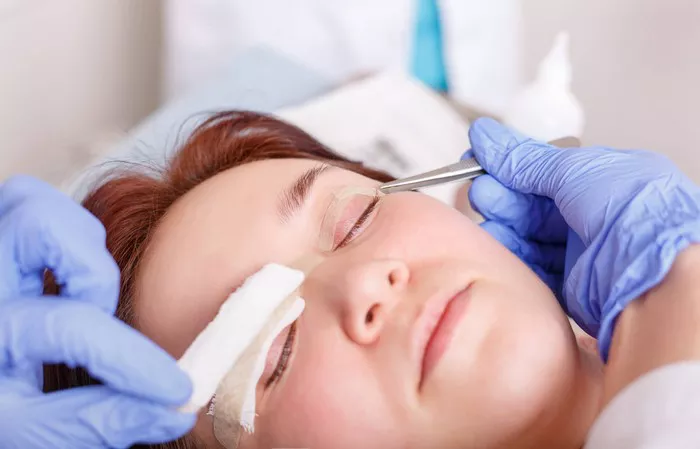Blepharoplasty, commonly known as eyelid surgery, is a cosmetic procedure that is used to improve the appearance of the eyelids. The procedure involves the removal of excess skin, fat, and muscle from the upper and/or lower eyelids, resulting in a more youthful and refreshed appearance. While the results of blepharoplasty can be dramatic and long-lasting, the recovery process can be a bit of a challenge. In this article, we will provide a comprehensive guide on how long for blepharoplasty to heal, including the recovery timeline, tips for a successful recovery, and what to expect during the healing process.
Recovery Timeline
The recovery timeline for blepharoplasty can vary depending on the individual and the extent of the procedure. Here is a general timeline for what to expect during the healing process:
Days 1-2: Immediately following the procedure, patients can expect some swelling, bruising, and discomfort around the eyes. Cold compresses can be used to help reduce swelling, and pain medication may be prescribed to manage any discomfort.
Days 3-5: Swelling and bruising will begin to subside, and patients may be able to return to work or other normal activities. However, it is important to avoid any strenuous activities that could increase blood pressure and cause bleeding.
Days 6-10: Swelling and bruising will continue to decrease, and patients may begin to see the results of the procedure. However, it is still important to avoid any strenuous activities and to continue to take care of the incision sites.
Days 11-14: Most patients are able to return to normal activities at this point, although some swelling and bruising may still be present. Patients should continue to take care of the incision sites and avoid any activities that could cause injury.
Weeks 3-4: Swelling and bruising should be minimal at this point, and patients should be able to resume all normal activities. However, it is important to continue to take care of the incision sites and to avoid any activities that could cause injury.
Months 2-3: The final results of the procedure should be visible at this point, and patients can enjoy their new, refreshed appearance.
It is important to note that the recovery timeline can vary based on individual factors such as age, health, and the extent of the procedure. Patients may experience a shorter or longer recovery time than the general timeline provided above.
Tips for a Successful Recovery
Here are some tips for a successful recovery from blepharoplasty:
Follow post-operative instructions: It is important to follow all post-operative instructions provided by your surgeon, including taking any prescribed medications, using cold compresses, and avoiding certain activities.
Keep the incision sites clean: It is important to keep the incision sites clean and dry to prevent infection. Your surgeon may provide instructions on how to clean the incision sites.
Avoid strenuous activities: It is important to avoid any strenuous activities, such as exercise or heavy lifting, for several weeks following the procedure.
Wear sunglasses: It is important to wear sunglasses to protect your eyes from the sun and wind during the healing process.
Attend follow-up appointments: It is important to attend all follow-up appointments with your surgeon to ensure that you are healing properly and to address any concerns or complications.
Following these tips can help to ensure a smooth and successful recovery from blepharoplasty.
What to Expect During the Healing Process
During the healing process, patients can expect some swelling, bruising, and discomfort around the eyes. The incision sites may be red and slightly raised, but this should subside over time. It is important to keep the incision sites clean and dry to prevent infection, and to avoid any activities that could cause injury. Patients should also expect to attend follow-up appointments with their surgeon to ensure that they are healing properly and to address any concerns or complications.
In addition to swelling and bruising, patients may also experience dry eyes, blurred vision, and sensitivity to light during the healing process. These symptoms are generally temporary and should subside over time. If these symptoms persist or worsen, it is important to contact your surgeon immediately.
Complications and Risks
While blepharoplasty is generally a safe and effective procedure, there are some risks and complications that patients should be aware of. These can include:
Infection
Bleeding
Scarring
Dry eyes
Vision changes
Eyelid asymmetry
It is important to discuss these risks with your surgeon prior to the procedure and to follow all post-operative instructions carefully to minimize the risk of complications.
Conclusion
Blepharoplasty is a popular cosmetic procedure that can improve the appearance of the eyelids. While the results of the procedure can be dramatic and long-lasting, the recovery process can be a bit of a challenge. Following the post-operative instructions provided by your surgeon, keeping the incision sites clean and dry, avoiding strenuous activities, wearing sunglasses, and attending follow-up appointments can all help to ensure a smooth and successful recovery. Patients can expect some swelling, bruising, and discomfort during the healing process, but these symptoms should subside over time. By understanding the recovery timeline and following these tips, patients can enjoy the full benefits of blepharoplasty with minimal complications.


